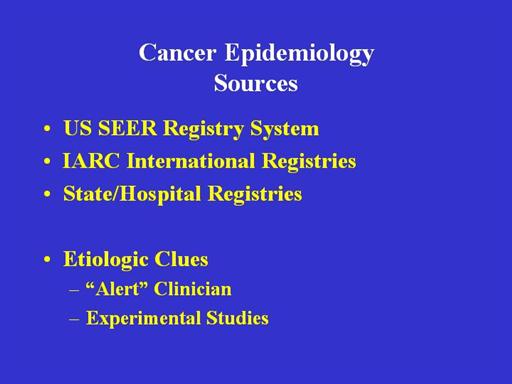 |
The
Surveillance, Epidemiology, and End Results (SEER) Program of the
National Cancer Institute (NCI) is an authoritative source of
information on cancer incidence and survival in the United States. SEER
currently collects and publishes cancer incidence and survival data from
population-based cancer registries covering approximately 26 percent of
the US population. SEER coverage includes 23 percent of African
Americans, 40 percent of Hispanics, 42 percent of American Indians and
Alaska Natives, 53 percent of Asians, and 70 percent of Hawaiian/Pacific
Islanders. (Details are provided in the table:
Number of
Persons by Race and Hispanic Ethnicity for SEER Participants.) The
SEER Program registries routinely collect data on patient
demographics, primary tumor site, tumor morphology and stage at
diagnosis, first course of treatment, and follow-up for vital status.
The SEER Program is the only comprehensive source of population-based
information in the United States that includes stage of cancer at the
time of diagnosis and patient survival data.
SEER
began collecting data on cancer cases on January 1, 1973, in the states
of
Connecticut,
Iowa,
New Mexico,
Utah, and
Hawaii and the metropolitan areas of
Detroit and
San Francisco-Oakland. In 1974-1975, the metropolitan area of
Atlanta and the 13-county
Seattle-Puget Sound area were added. In 1978, 10 predominantly black
rural counties in Georgia were added, followed in 1980 by the
addition of American Indians residing in
Arizona. Three additional geographic areas participated in the SEER
program prior to 1990: New Orleans, Louisiana (1974-1977, rejoined
2001); New Jersey (1979- 1989, rejoined 2001); and Puerto Rico
(1973-1989). The National Cancer Institute also funds a cancer registry
that, with technical assistance from SEER, collects information on
cancer cases among Alaska Native populations residing in
Alaska. In 1992, the SEER Program was expanded to increase coverage
of minority populations, especially Hispanics, by adding
Los Angeles County and four counties in the
San Jose-Monterey area south of San Francisco. In 2001, the SEER
Program
expanded coverage to include
Kentucky and the remaining counties in California (Greater
California); in addition,
New Jersey and
Louisiana once again became participants. For the expansion
registries (Kentucky, Greater California, New Jersey, and Louisiana),
NCI funds are combined with funding from the
Centers for Disease Control and Prevention (CDC) through the
National Program of Cancer Registries and with funding from the
states.
NCI
staff work with the
North American Association of Central Cancer Registries (NAACCR) to
guide all state registries to achieve data content and compatibility
acceptable for pooling data and improving national estimates. The SEER
team is developing computer applications to unify cancer registration
systems and to analyze and disseminate population-based data. Use of
surveillance data for research is being improved through Web-based
access to the data and analytic tools, and linking with other national
data sources. For example, a new Web-based tool for public health
officials and policy makers,
State Cancer
Profiles, provides a user-friendly interface for finding cancer
statistics for specific states and counties. This Web site is a joint
project between NCI and CDC and is part of the
Cancer Control PLANET Web site which provides links to comprehensive
cancer control resources for public health professionals.
The
SEER Program is considered the standard for quality among cancer
registries around the world. Quality control has been an integral part
of SEER since its inception. Every year, studies are conducted in SEER
areas to evaluate the quality and completeness of the data being
reported.
The
International Agency for Research on Cancer (IARC) is part of the
World Health Organization.
IARC's mission is to coordinate and conduct research on the causes of
human cancer, the mechanisms of carcinogenesis, and to develop
scientific strategies for cancer control. The Agency is involved in both
epidemiological and laboratory research and disseminates scientific
information through publications, meetings, courses, and fellowships.
|
